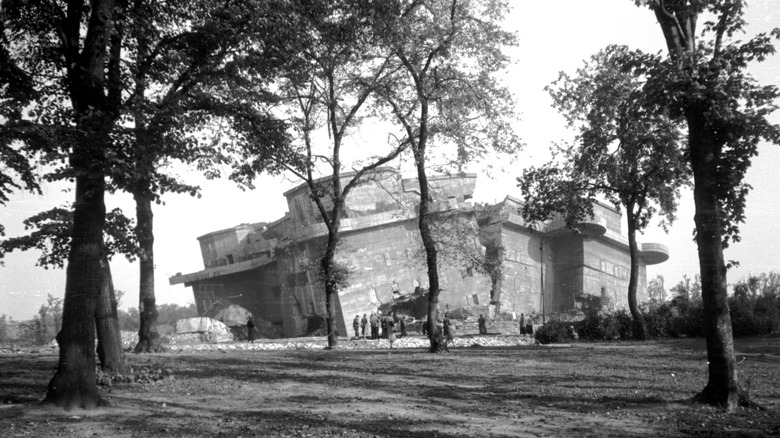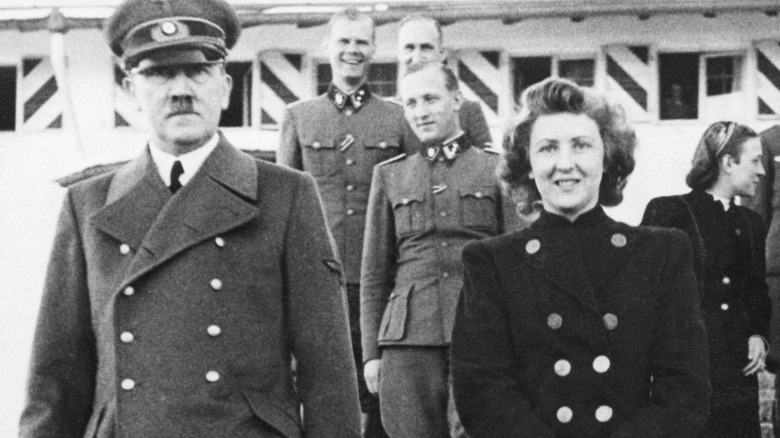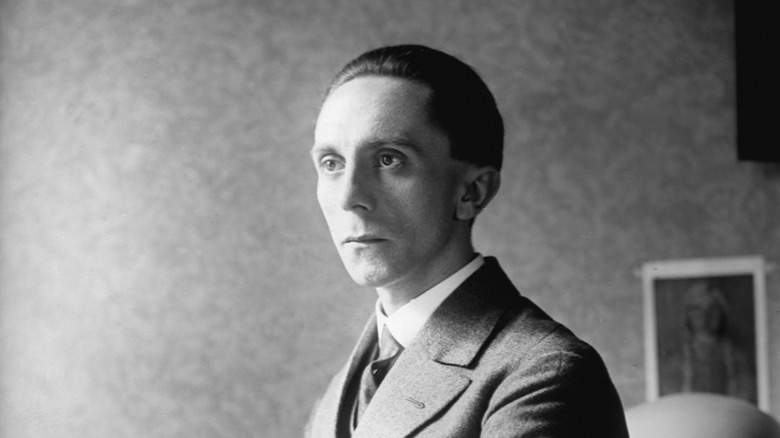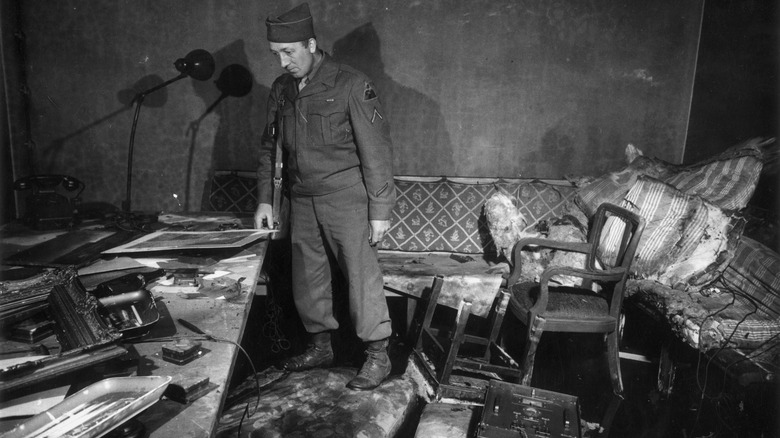Things Found At Adolf Hitler's Death Scene
World War II was a conflict that saw millions slaughtered and displaced across Europe and beyond, with nations such as France and Poland devastated by aggression from Germany, which had been ruled since 1933 by the fascist and expansionist National Socialist (Nazi) Party. However, 1944 saw a decisive shift in fortunes in the conflict, with the allied forces of the United States, United Kingdom, the Soviet Union (USSR), and France beginning to make inroads into Germany itself. Historians have highlighted the Battle of Stalingrad as a turning point: the moment when the Nazis saw their plan of maintaining two battlefronts in the East and West fall to pieces. In January 1945, with greater and greater swaths of the country falling under enemy occupation, the senior Nazis recognized that a sustained ground assault on Berlin, the center of the Nazi world, was imminent.
As 1945 commenced and battles began to rage throughout a crumbling Berlin, the Nazi leader, Adolf Hitler, found that his fascist empire had shrunken to nothing. Since becoming Chancellor of Germany, Hitler had taken as his primary residence the Reich Chancellery, a sumptuous palace in the center of Berlin. But as artillery fire became more frequent, Hitler and his inner circle were restricted increasingly to the Führerbunker, a 3,000-square-foot network of rooms 50 feet below the surface. Here, too, Hitler would die by suicide alongside his wife of a single day, Eva Braun, though much of the evidence was cleared before the arrival of Allied forces.
A suicide pact
Adolf Hitler spent 105 days living almost completely below ground during the collapse of Nazi Germany. Despite being built primarily as an artillery defense and characterized by the slate grey concrete in which it was encased, the Führerbunker was surprisingly luxurious, including dining rooms, a sumptuous study for the Nazi leader, and a conference room. It was here that Hitler married his lover Eva Braun shortly after midnight on April 29, as Berlin was pounded by artillery strikes by the advancing Allied forces.
Senior Nazis Joseph Goebbels and Martin Bormann were witnesses at the ceremony, though they were part of a dwindling circle of loyalists who, following Hitler, were willing to remain in Berlin as the city became encircled. Most of Hitler's former allies had left Berlin. The wedding party, it seems, was preparing to go down with the ship. The following day, Hitler and Braun entered the Nazi leader's study and failed to emerge. They were found slumped together on a couch, which was stained with blood from a gunshot wound at Hitler's temple. Braun's body was said to smell strongly of almonds, a sign that she had taken a cyanide pill, one of which had hours earlier been tested on Hitler's dog, Blondi. Other dogs in the bunker were also killed. Goebbels and his wife died by suicide in the bunker, arranging the murders of their six children, also in the bunker, before they ended their own lives, per The Sydney Morning Herald, while Bormann died on the surface attempting to flee Berlin.
Scorched earth
The suicidal end of Nazi Germany came immediately after news broke that the Italian fascist leader Benito Mussolini, a key ally of the Nazis, had been shot to death at the hands of partisans who posthumously strung him from a lamppost and desecrated his body. Adolf Hitler and Joseph Goebbels' (pictured) suicides were carried out to avoid a similarly brutal fate.
But Hitler was also keen to avoid having his dead body fall into Allied possession. As such, he ordered that his and Eva Braun's corpses be burned in the Reich Chancellery garden following their double suicide, an order which his loyalists carried out. When Soviet soldiers arrived at the Chancellery, they searched the connected bunkers extensively in the hope of finding Hitler's corpse, but all that is believed to remain of him is a fragment of cranium with a bullet hole and a piece of jawbone, the latter of which has been confirmed as Hitler's through his dental records. Soldiers also discovered a pile of gasoline cans which were believed to have been used to torch the bodies.
After the conclusion of the war, the Allies went on to conduct extensive inquiries into the workings of Nazi Germany. They took little evidence from the bunker itself: Hitler's personal safe had been emptied of documents which were also burnt along with those of Goebbels and other loyalists to avoid them falling into enemy hands.
A ravaged sanctuary
Little knowledge of the exact circumstances of Adolf Hitler's death made it into the press until well after the end of World War II, with the lack of a definitive corpse fuelling numerous conspiracy theories, some of which suggested that he had actually escaped the bunker along with several other senior Nazis. Those details that did emerge were initially shrouded in confusion and contradictory testimony, but a contemporary photo report published in Life magazine offered American readers their first unfiltered insight into the chaos of Hitler's final days.
The piece was the work of a young photojournalist named William Vandivert who captured the devastation following the Battle of Berlin and the raiding of the Reich Chancellery and Führerbunker. His photos show many of the objects retrieved after Hitler's death, including a bust of the dead leader, and stolen artworks that once adorned the walls of the bunker, but which now lay shattered in the wake of Soviet soldiers. Vandivert's photos showed troops examining the death scene by candlelight, with Hitler's blood still visible, while in other photos sofa cushions and upturned furniture lay haphazardly among the dust and debris. Lamps, telephones, and drawers are strewn around, while one photo shows an SS cap, bearing the infamous skull and crossbones logo, caked with plaster. Hitler's suicide pistol has never been found and is assumed to have been taken by a soldier as a souvenir, while the Reich Chancellery and the bunker were destroyed with dynamite in the years that followed.



